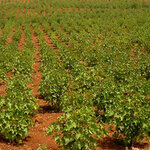Energy

A new report from the National Research Council suggests that naturally occurring methane hydrate may represent an enormous source of methane, the main component of natural gas, and could ultimately augment conventional natural gas supplies. Although a number of challenges require attention before commercial production can be realized, no technical challenges have been identified as insurmountable.
Moreover, the U.S. Department of Energy's Methane Hydrate Research and Development Program has made considerable progress in the past five years toward understanding and developing methane hydrate…

The authors of a new study in Energy&Fuels say they have developed an advanced "closed-loop control" approach for preventing diesel engines from emitting greater amounts of smog-causing nitrogen oxides when running on biodiesel fuels.
The new technique uses advanced models to self-adjust engine settings based on feedback from sensors. Software algorithms use data from the sensors to determine the fuel blend being combusted. If the fuel is changed, the system identifies the new fuel and makes critical adjustments to fuel-injection timing, the air-to-fuel ratio and how much exhaust is…

First Generation Biofuels Provide Foundation for Fuels of Tomorrow
January 20th, 2010
Goto comments
Leave a comment Biofuels provide much needed environmental, economic development and national security benefits. Ethanol is a first-generation biofuel that not only provides these benefits, but offers a platform from which explosive growth will be seen in future generations of biofuels. It’s important not to lose sight of the contributions ethanol is making, and will continue to make, to our growing demand for energy.
The DOE recently announced an investment of nearly $80 million into algae-…

ABSTRACT: A large number of hydrocarbon yielding plants like Calotropis procera, Euphorbia antisyphilitica have been reported to yield bio-fuel products. Attempts have been made to increase their growth and hydrocarbon yield potential. Studies were conducted to improve growth and productivity of these plants under field conditions In Rajasthan, Calotropis procera grows wild while Euphorbia antisyphilitica has been introduced from Mexico. Jatropha grows wild in south east Rajasthan which lies on south east side of Aravalli hill range which roughly divides the state in semi-arid and arid…

When some one iterrupted me and told me that he has seen Jatropha growing on bare rocks I could not deny this fact but when people say its a plant for wasteland and Government of over 30 countries go after its mass plantation I feel scared as a botanist. The simple reason is that althogh this plant has the ability to grow in adverse climate that does not mean it will produce fruits also. Our experience of 25 years of work on Jatropha has proved that although it can grow below 300 mm rainfall also but it will need at least 400 to 600 mm of rainfall for bearing fruits. There is a Jatropha belt…

Blanket subsidies for hybrid electric vehicles won't get drivers out of their old gas guzzlers and into the new energy efficient cars, according to a new study in Energy Policy. When it comes to pumping up the appeal of plug-in hybrid electric vehicles (PHEVs), researchers say some regions are more ripe for the cars than others, and some consumers' buttons need more pushing than others.
The study found that giving consumers who live and drive in regions where the social benefits of electric–boosted cars are strongest, and recognizing the circumstances of consumers – such as their income…

Ethanol is the way of the future. Although hydrogen power is the talk of the world, in truth it is a distant solution, possibly as far away at fifty years. Ethanol/Gasoline will be available in mass production in 10 to 15 years, and a major source will be Brazilian ethanol plants.
Ethanol has a bad reputation in the US because it is made with corn, but Brazilian ethanol avoids this stigma because it is made with sugarcane. Oil companies are already buying Brazilian ethanol for blending, because even with the US import tariff of 54.5 cents per gallon, it is still less expensive than gasoline.…

Bio-diesel is an alternative fuel derived from either Soy or Jatropha, and it is big in Brazil. By 2012, the Brazilian government will mandate an 8% blend of bio-diesel. The prospect of this increased demand for bio-diesel is causing a large ramp up in the bio-diesel industry.
Brazilian Soy farms for bio-diesel are very big business. Bunge is the largest soy grower in Brazil, followed by ADM and Cargill – all are foreign companies. To make bio-diesel, soy is mechanically processed and separated into oil (used to make the bio-diesel) and soy meal (used for animal feed). Soy farming is very…

The U.S. government's biofuels policy needs a makeover, according to researchers from Rice University. In a new study published by the university's Baker Institute for Public Policy, the team says that the economic, environmental and logistical basis for the billions of dollars in federal subsidies and protectionist tariffs that go to domestic ethanol producers every year is seriously flawed and urge lawmakers to fundamentally rethink the policy of promoting ethanol to diversify America's energy sources.
As an example of the unintended economic consequences of U.S. biofuels policy, the…

Mumbai: India’s second largest airline by passengers carried, Kingfisher Airlines Ltd, has signed an agreement with three international firms to explore development and production of an alternative jet fuel to reduce carbon emissions.
Power backup: Kingfisher Airlines chairman Vijay Mallya. Pankaj Nangia / Bloomberg
Regular jet fuel or aviation turbine fuel (ATF), a colourless refined kerosene, accounts for up to 40% of the total operating cost of airlines in India.
“We have already signed up with three companies to develop the biofuel. We are working on the cost-benefit analysis for the…